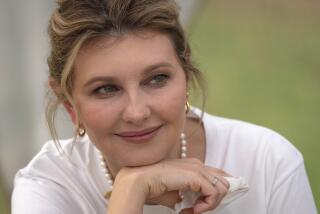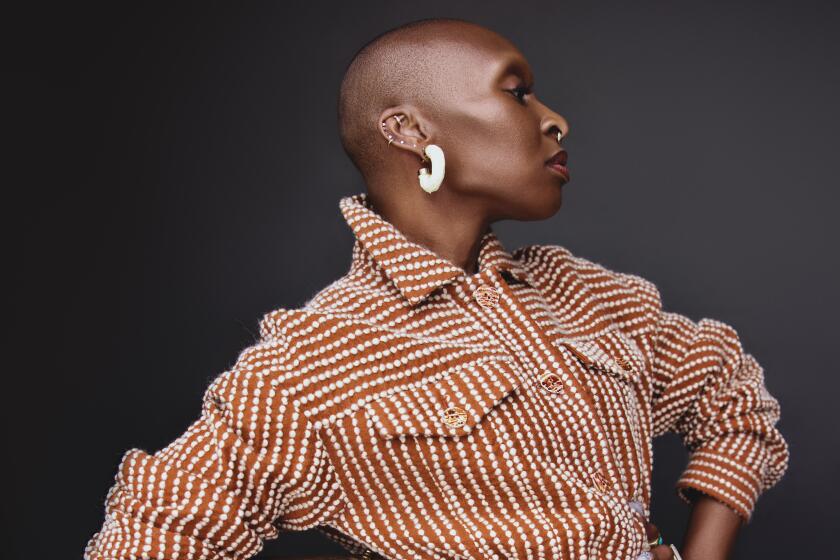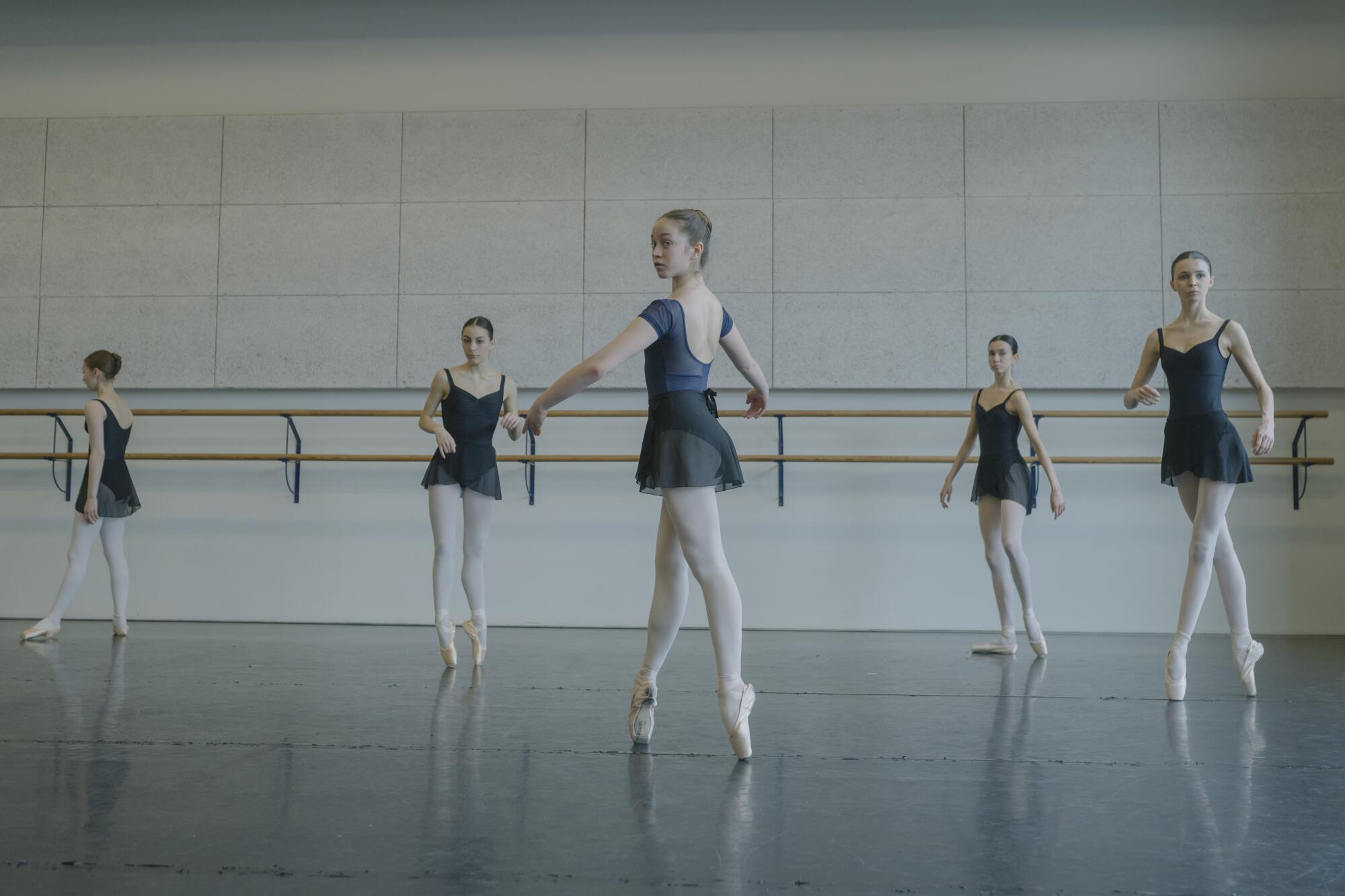
- Share via
“When the war started and we lost everything …” Oksana Zhuravlova trails off, searching for the words to continue. She takes a breath and tries again.
“When the war started, it was like life ended,” she says, her voice quavering with emotion. “And when we heard that our daughter Kateryna can go to Germany to study in a really good school, it was like a light at the end of a tunnel. It was the only hope for the future.”
Zhuravlova’s words come in a rush over a WhatsApp call from Stuttgart, Germany, where she sits on a bed in her 14-year-old daughter’s room at the renowned John Cranko School for ballet. Oksana and Kateryna are from Kyiv and recently arrived in Stuttgart after fleeing Ukraine’s capital in the face of ongoing Russian bombardment.
To get there, they spent all night and most of a day waiting in a massive queue of refugees at the Hungarian border before finally being allowed to cross.
Oksana says her head is a mess. She can’t sleep. Her body and mind ache with worry. She and Kateryna left Kateryna’s father and 7-year-old sister in western Ukraine, where Oksana hopes they will be safe. Her parents refused to leave Kyiv and have been sheltering for weeks in their basement. Oksana calls to check in on them constantly — and when she does, she can hear the heart-stopping thunder of explosions in the background.
Now that Oksana has helped Kateryna settle in at her new school, she must make the relentless three-day journey back to Ukraine. Her youngest daughter, Polina, is waiting for her — and taking online ballet classes from her dance teacher, Ksenia Istomina, who chose to remain in Kyiv and teaches daily virtual lessons for kids who can’t leave.
Oksana says she is not ready to separate her family, but she must be with Polina. Plus, she notes sadly, there is no line for heading back into Ukraine.
After she safely rejoins her husband, Oksana texts that a friend’s home in Kyiv was bombed and the friend’s 3-year-old son was killed.
“Big tragedy,” she writes. “Children don’t have to die.”
Kateryna is one of more than 80 young Ukrainian dancers who have found safe haven at prestigious ballet schools throughout Europe with the help of a New York-based nonprofit called Youth America Grand Prix, which has operated the world’s largest student ballet scholarship competition since 1999.
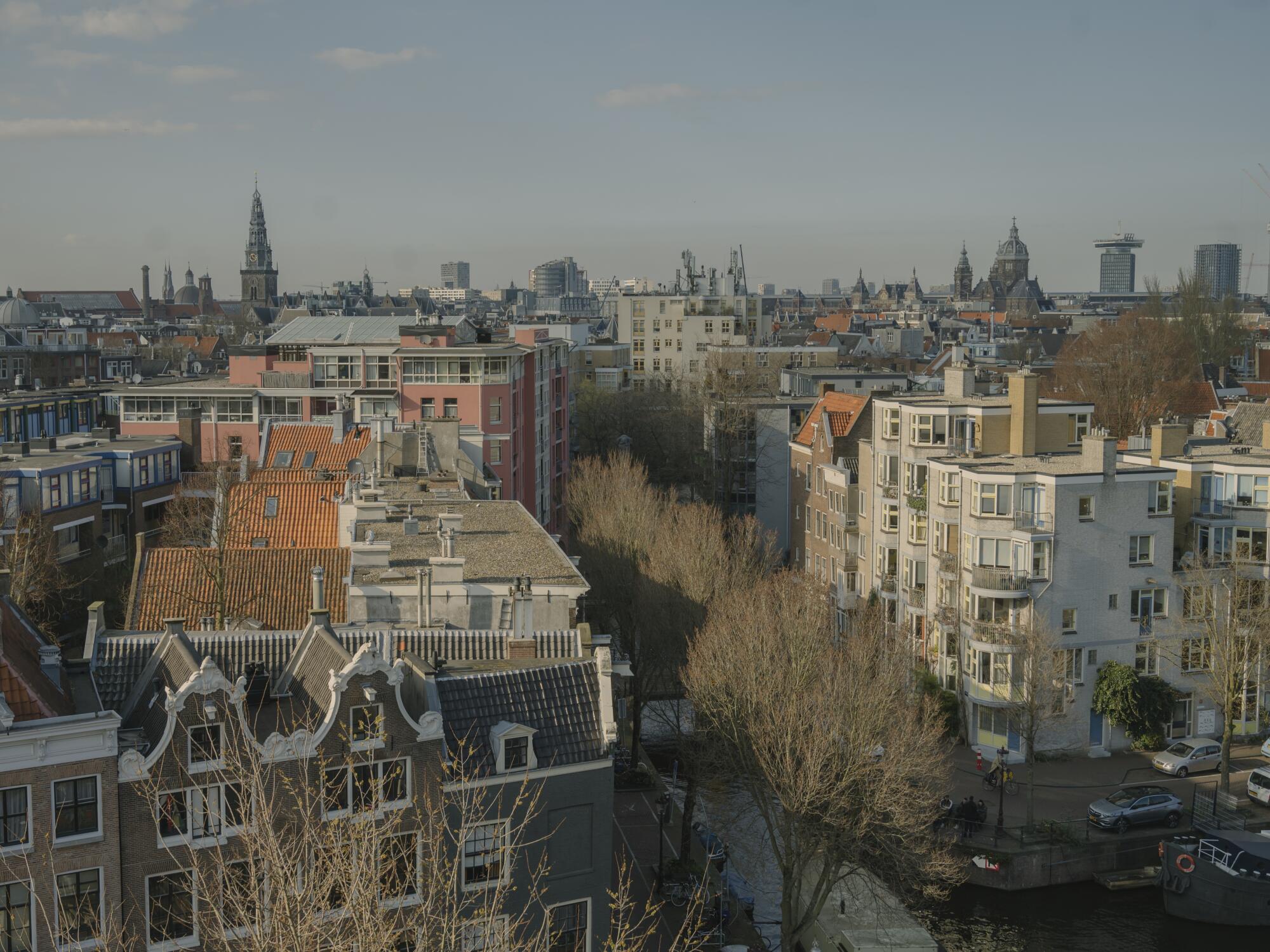
Founded by husband and wife duo Gennadi and Larissa Saveliev, former dancers for the Bolshoi Ballet in Moscow, the organization has awarded more than $4.5 million in scholarships to dance schools, and more than 150,000 students have participated in its international workshops and auditions. Young competitors are highly skilled and serious about the art form — often with the goal of building lifelong careers.
Over the years, YAGP has held competitions all over the world, but never in Ukraine. Its first competition in Kyiv was set to take place in early March, and more than 200 young dancers had signed up to take part from all over Eastern Europe, Larissa says in a phone interview. After Russia began its brutal invasion of Ukraine in late February, and it quickly became apparent the event could not take place, Larissa emailed the Ukrainian students to tell them about the cancellation.
She also wrote they should contact YAGP if they needed help finding a ballet school. As the war in Ukraine worsened and waves of refugees flooded out of the country, Larissa says phone calls poured in. Somebody passed along Larissa’s cell number, and she began getting calls from kids in the middle of the night. Dancers, usually between the ages of 12 and 18, were arriving at borders in Poland, Hungary and Romania, sometimes with little more than the clothes on their backs, asking where they should go from there.
Larissa and YAGP began working feverishly, often sleeping for only a few hours a night, to secure the kids spots at ballet schools throughout Europe. Once they arranged placement, they would email the acceptance letters, which dancers could pull up on their phones to help their case for getting across the border. Sometimes the young students would leave Ukraine alone. Sometimes they were able to take their mothers, sisters and grandmothers with them.
Free buses operated by border countries helped shuttle the students to their various prearranged destinations, including the Princess Grace Academy in Monaco, State Ballet School, Munich International Ballet School, Zurich Dance Academy, Dutch National Ballet School, Palucca University of Dance Dresden, Basel Theater Ballet School, European School of Ballet in the Netherlands, and Norwegian National Ballet School.
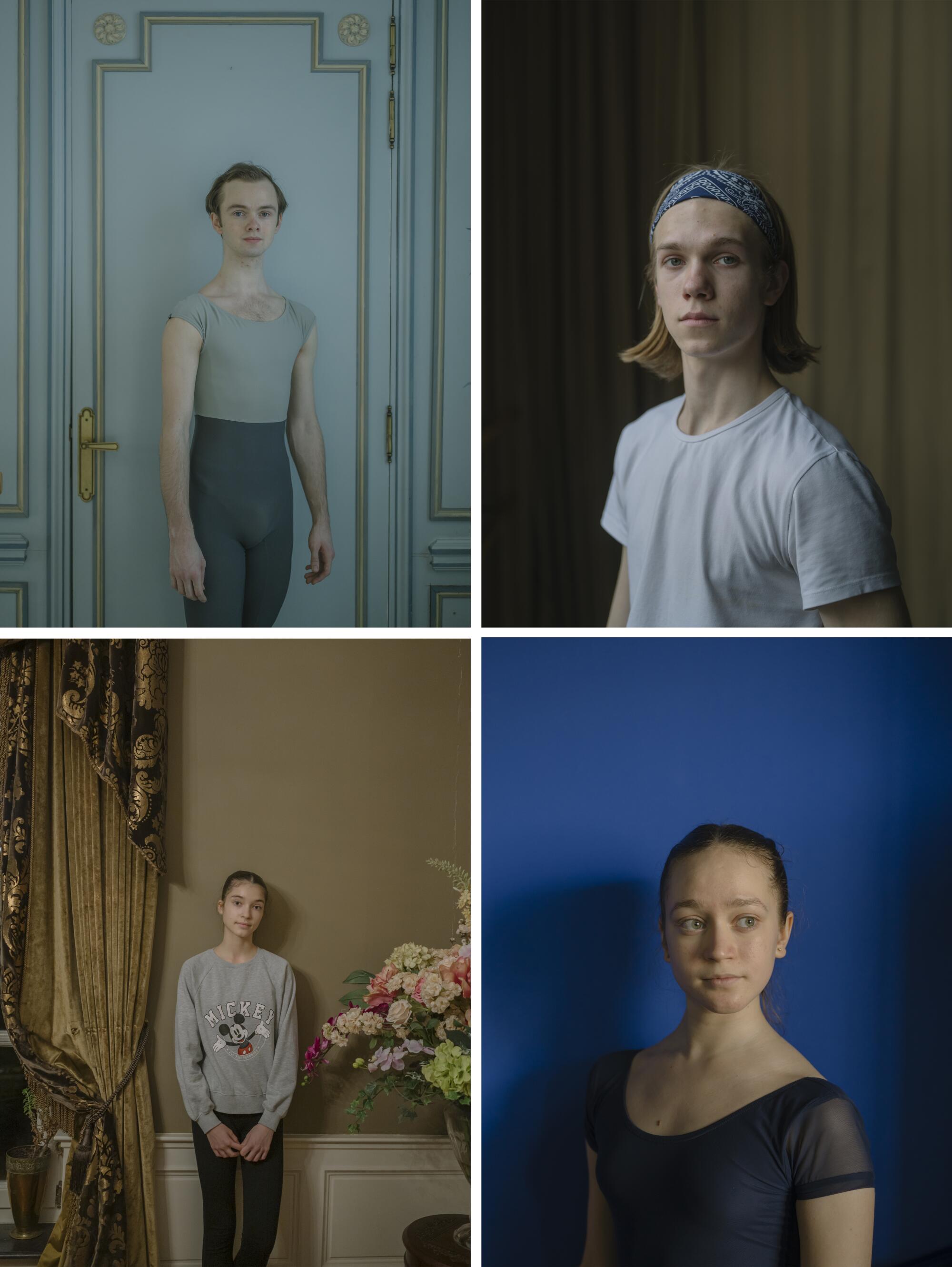
“I have no idea when it’s gonna stop,” says Larissa, “because the kids keep coming.”
To date, Russia’s war in Ukraine has resulted in an estimated 3 million refugees fleeing the country, about half of whom are children.
Seventeen-year-old dancer Martin Korol left the northeastern city of Kharkiv alone, carrying only a backpack and 50 euros. Korol’s mother could not go with him because she needed to care for her aging parents.
Kharkiv, a thriving, artistic city of 1.5 million, is among the most destroyed urban centers of the war. A picture Korol sent The Times shows him and his girlfriend in a bomb shelter — hands twined like vines, heads pressed close together. An Instagram post he shares shows a town square in rubble after a Russian rocket attack. Twisted metal, broken bricks, toppled statues. It’s the center of his city, he writes, near where his parents live.
Korol arrived at the Polish border and called YAGP. He waited for more than 20 hours until he was able to cross. A video he sent shows a chaotic scene with makeshift tents, sausages cooking on a large grill and volunteers in orange vests circulating among the gathered refugees. Korol says one volunteer was very kind, giving him food, water and something sweet to eat.
YAGP secured Korol a spot at Princess Grace Academy in Monaco and helped him navigate a circuitous route — via bus, car and plane — to the seaside haven on the French Riviera. The school’s artistic director, Luca Masala, took Korol shopping for clothes and ballet essentials.
“The academy gives me a room, and I can eat with the boys, and I go to the class. Everyone is so kind to me.” says Korol during a WhatsApp call. “Now I have a strange feeling, I don’t know what will be next. I’m so scared and worried about my family.”
Princess Grace Academy has so far welcomed a total of four young Ukrainian dancers, and says it will help more if it can.
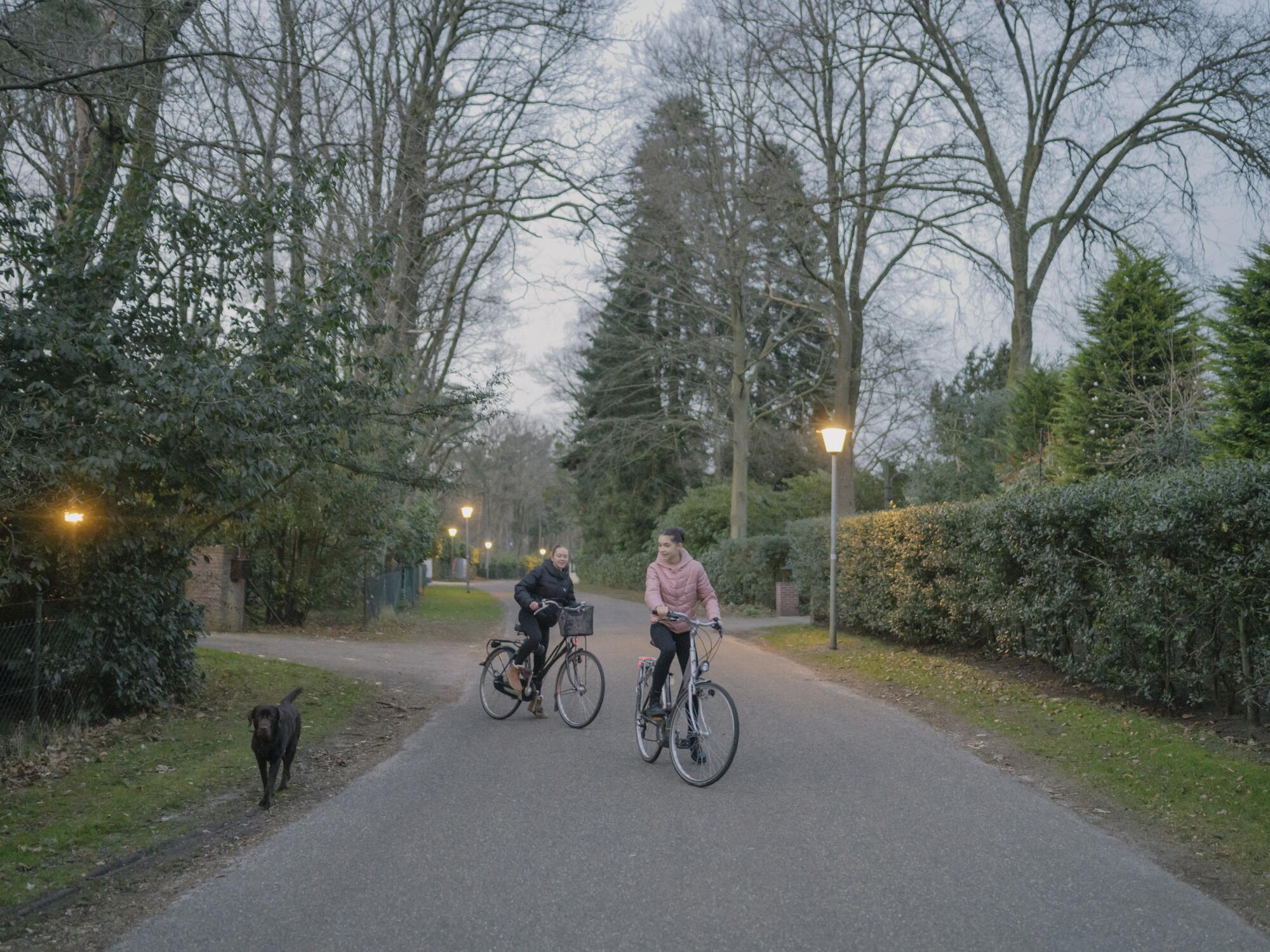
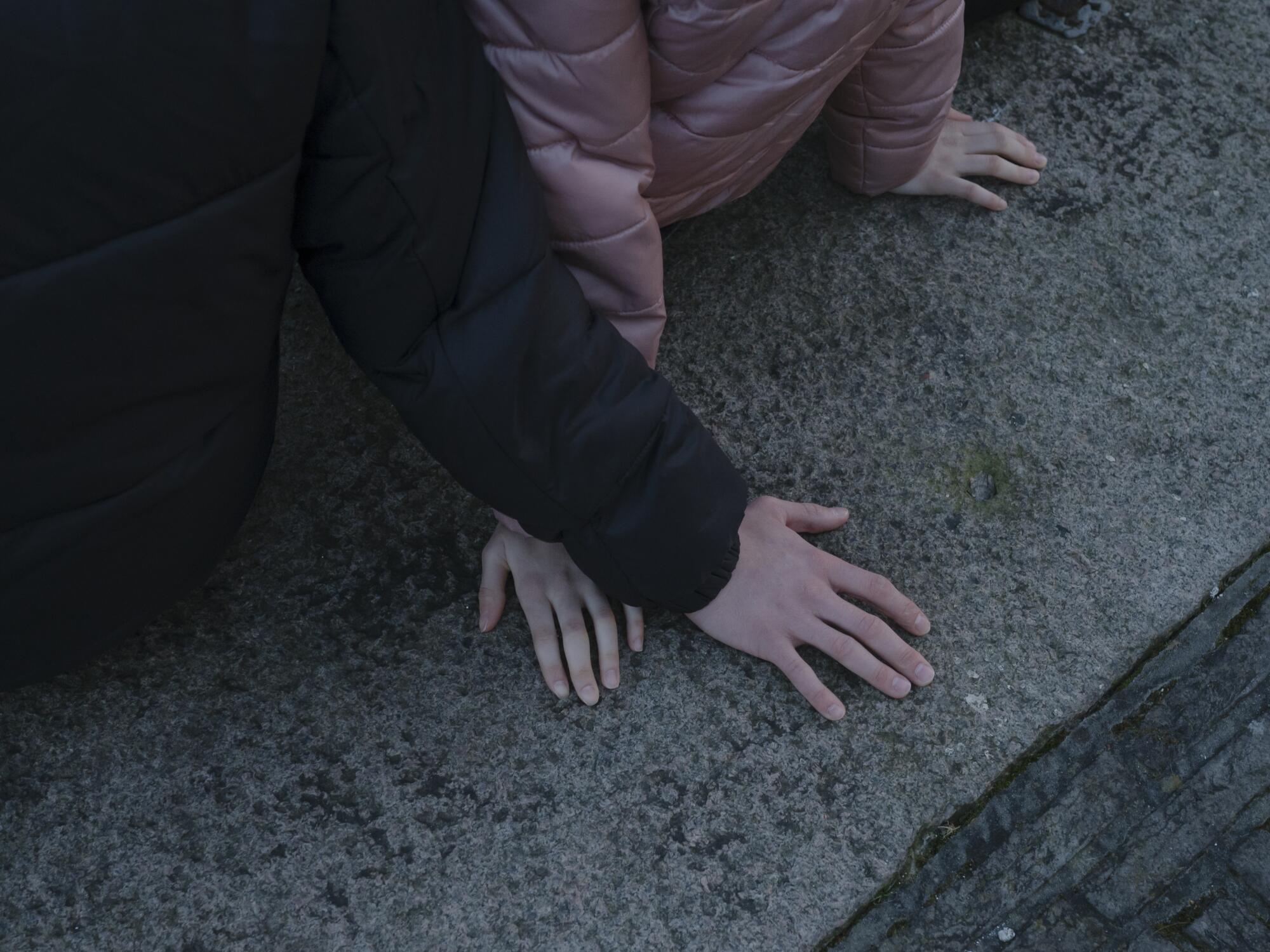

Twelve-year-old Sophia Shalala Weatherill is taking classes at a school in central Europe, which asked to remain unnamed for reasons of privacy, after evacuating on one of the last commercial flights leaving Kyiv’s Boryspil International Airport two days before the Russian invasion began.
Sophia fled Ukraine with her mother, Nancy Shalala. Both Sophia and Nancy are American but have lived in Kyiv for the past few years while Sophia’s father has been working as a humanitarian officer for the United Nations. When the Russian invasion became imminent, Nancy packed their lives into two suitcases and left with Sophia. Her husband relocated to the city of Lviv in western Ukraine, where he is currently working to administer aid to the more than 200,000 refugees who have flocked there in recent days.
Nancy worries as the war has moved westward — a missile strike recently rattled the outskirts of Lviv. She asked her husband if he could work somewhere safer, perhaps in Poland, but she knows the people who need his help the most are inside Ukraine. Her husband has no intention of leaving, and she and Sophia respect his decision.
Before she was a ballet mom, Nancy says, she worked assisting families impacted by war. It feels strange and humbling to now be on the receiving end of that assistance, she says. With YAGP’s help, Sophia found a place at a respected school. This gave her family purpose — and a much-needed sense of stability — amid the chaos.
“When you’re displaced, you lose your family possessions, your family photos, your journals. All the things that connect you to the past and the people you love,” says Nancy, adding that some of her family’s closest Ukrainian friends, including Sophia’s beloved ballet teacher, chose to remain in Kyiv. The teacher, Zoya Grigorievna, is working closely with YAGP to help young dancers find safe haven.
The last picture Nancy received of Grigorievna shows her hiding away from windows during a bomb scare. She holds her pug under her left arm — her legs under blankets, her posture effortlessly elegant, her kind face drawn and tired.
For Sophia, the ability to dance six days a week also presents an opportunity for her worries to be temporarily assuaged.
“It’s a feeling of joy, and it’s a feeling of peace,” she says over the phone. “It’s like my meditation, and when you’re working in a studio your mind can’t wander, it has to be focused on what you’re doing.”
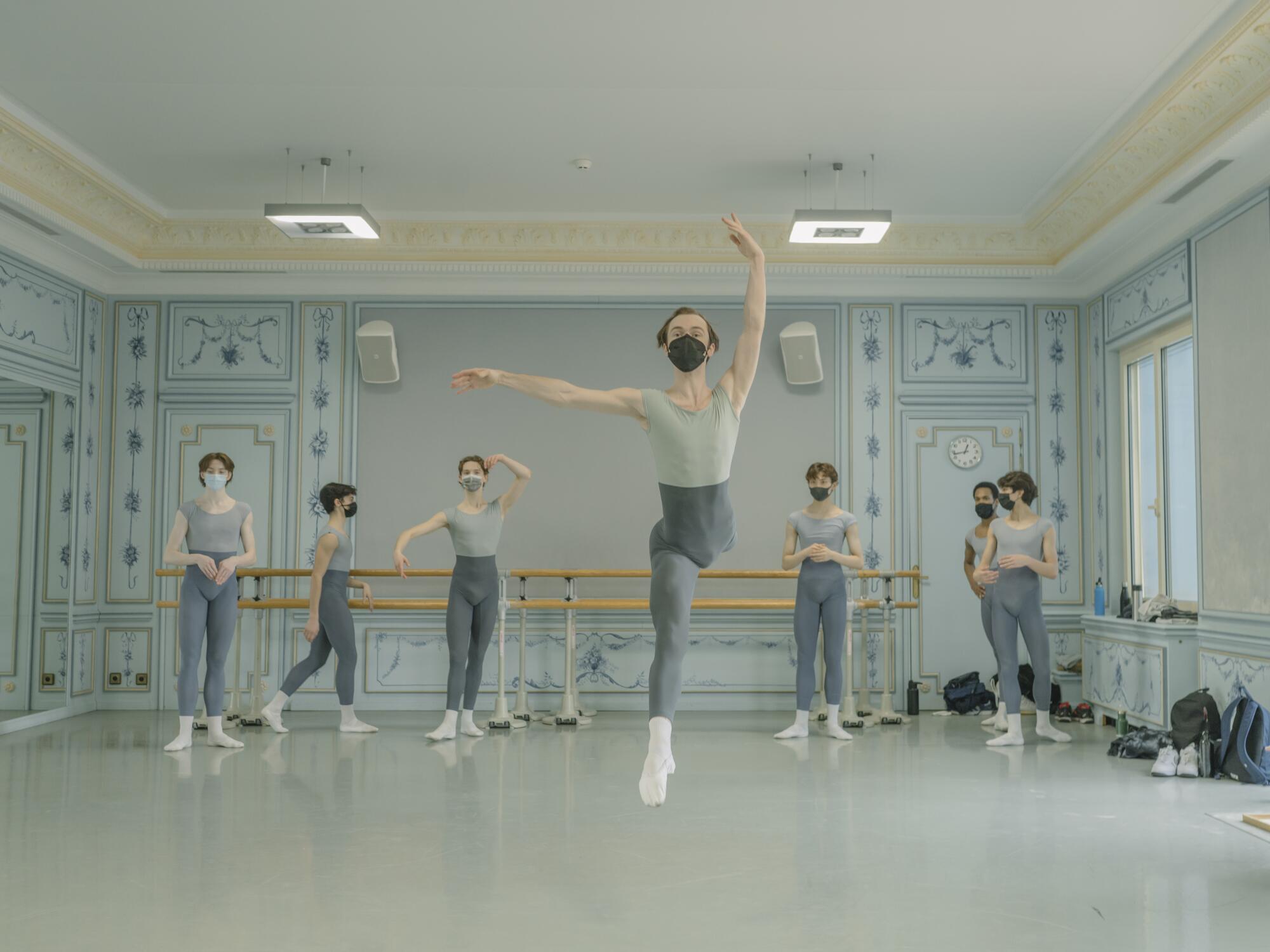
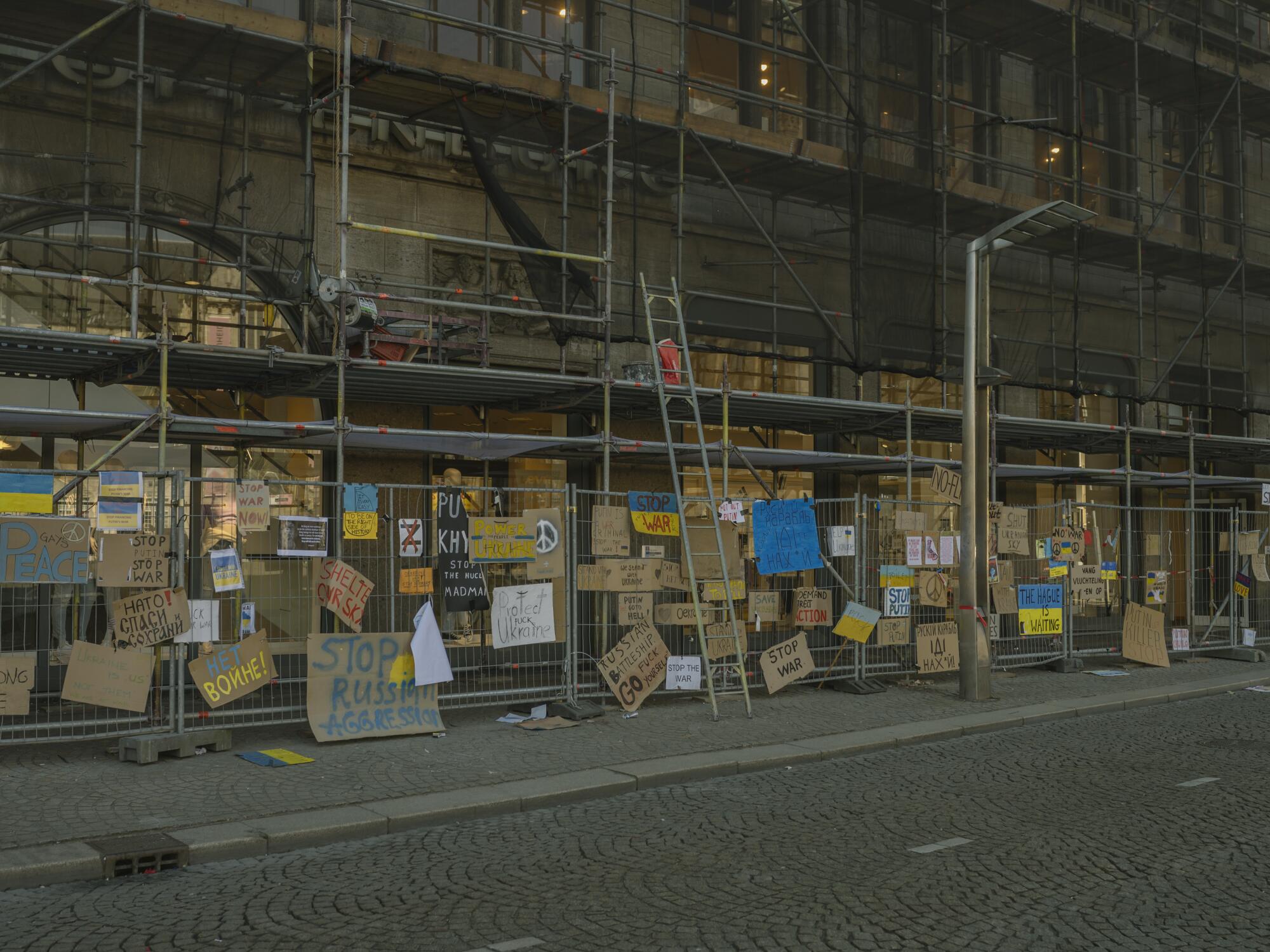
At the Dutch National Ballet Academy, three teenage dancers are struggling to understand what they have been through. They are still decompressing from their frantic three-day car journey from Kyiv, over the Romanian border and into the Netherlands.
Sofia Chycha, 15, Maria Bondarenko, 18, and Dimitry Sitnitsky, 17, studied dance in Kyiv before the bombs began raining down. They were terrified to go outside during the day and they were forbidden to go out after 8 p.m. because it was possible to be mistaken for a member of the military.
With great trepidation, the trio escaped Kyiv, along with Chycha’s mother and uncle. They drove from Romania, through Hungary and into Slovakia, where their car broke down — a stressful mishap that delayed their arrival in the Netherlands by a day. Larissa Saveliev’s niece, Jana van Aalst, is hosting them in her home for now.
“We are really scared and full of emotion,” says Bondarenko over a video call, explaining that their fathers can’t leave and that her and Sitnitsky’s mothers are afraid to go. Their families, she says, are currently hiding in bomb shelters.
The teens have been dancing since they were small. Sitnitsky started when he was 4, Bondarenko at 6 and Chycha when she was 9. It is all they have ever wanted to do. They feared the war would put an end to their dreams by making further dance education impossible.
They do not take the lifeline thrown to them by YAGP and Dutch ballet school lightly. They will dance for their families, they say, and for a brighter future when they can once again go home.
Kyiv, says Oksana, is particularly beautiful in the spring.
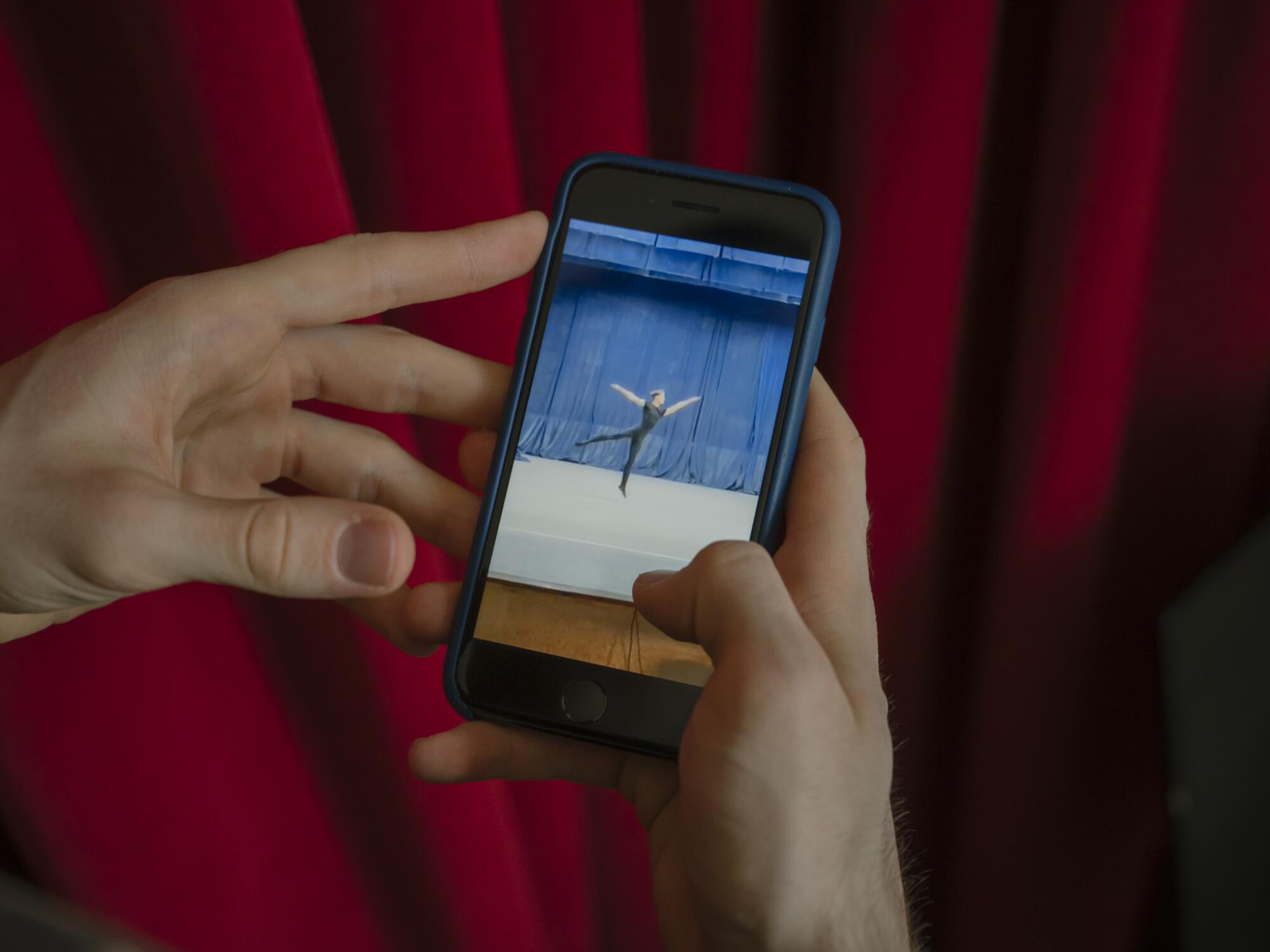
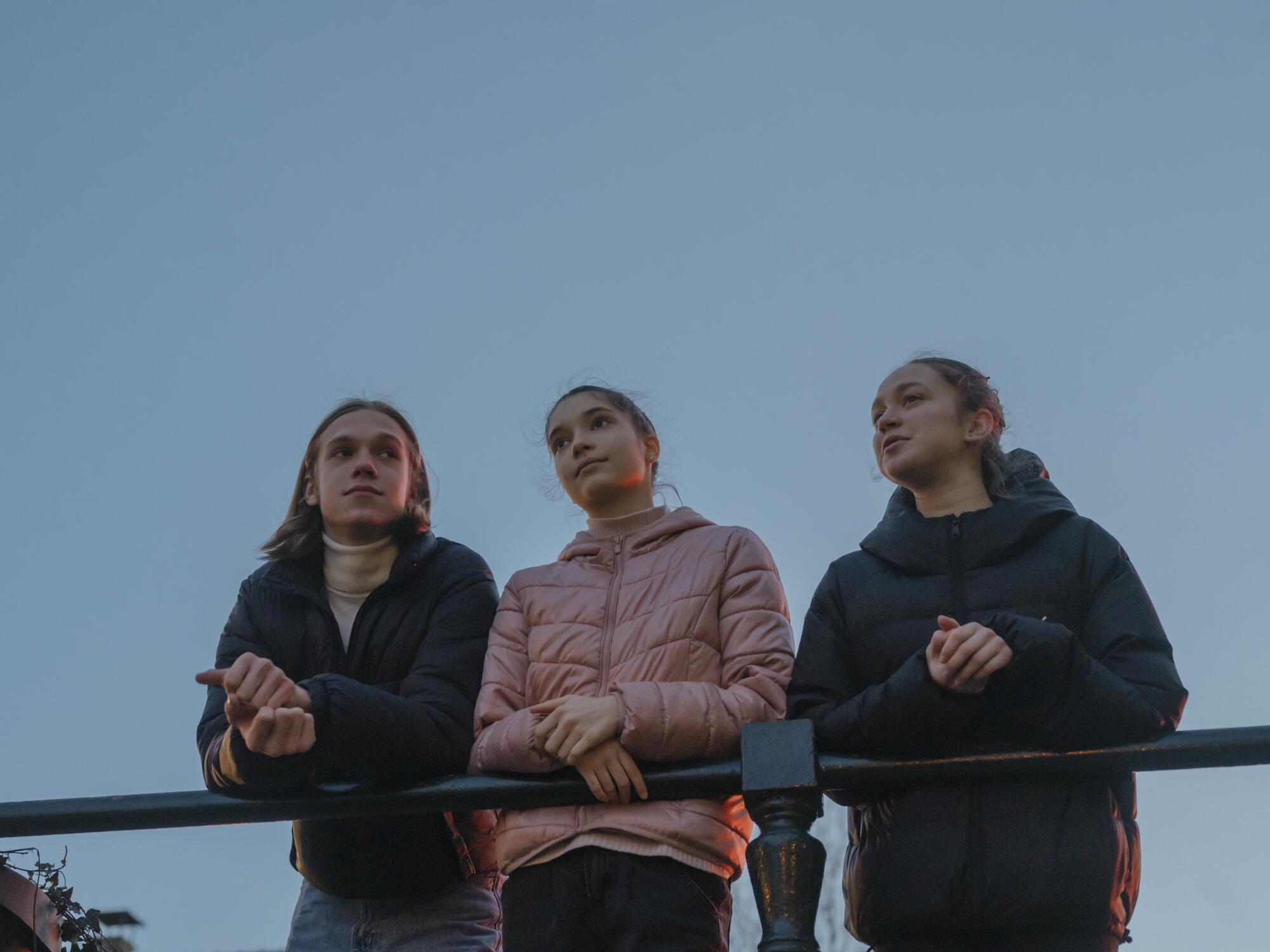
YAGP has set up a donations portal to continue its efforts to help Ukrainian dancers. It can be found here.
More to Read
About this story
Photo editing and story design by Jacob Moscovitch. This project was edited by Paula Mejía.
The biggest entertainment stories
Get our big stories about Hollywood, film, television, music, arts, culture and more right in your inbox as soon as they publish.
You may occasionally receive promotional content from the Los Angeles Times.


